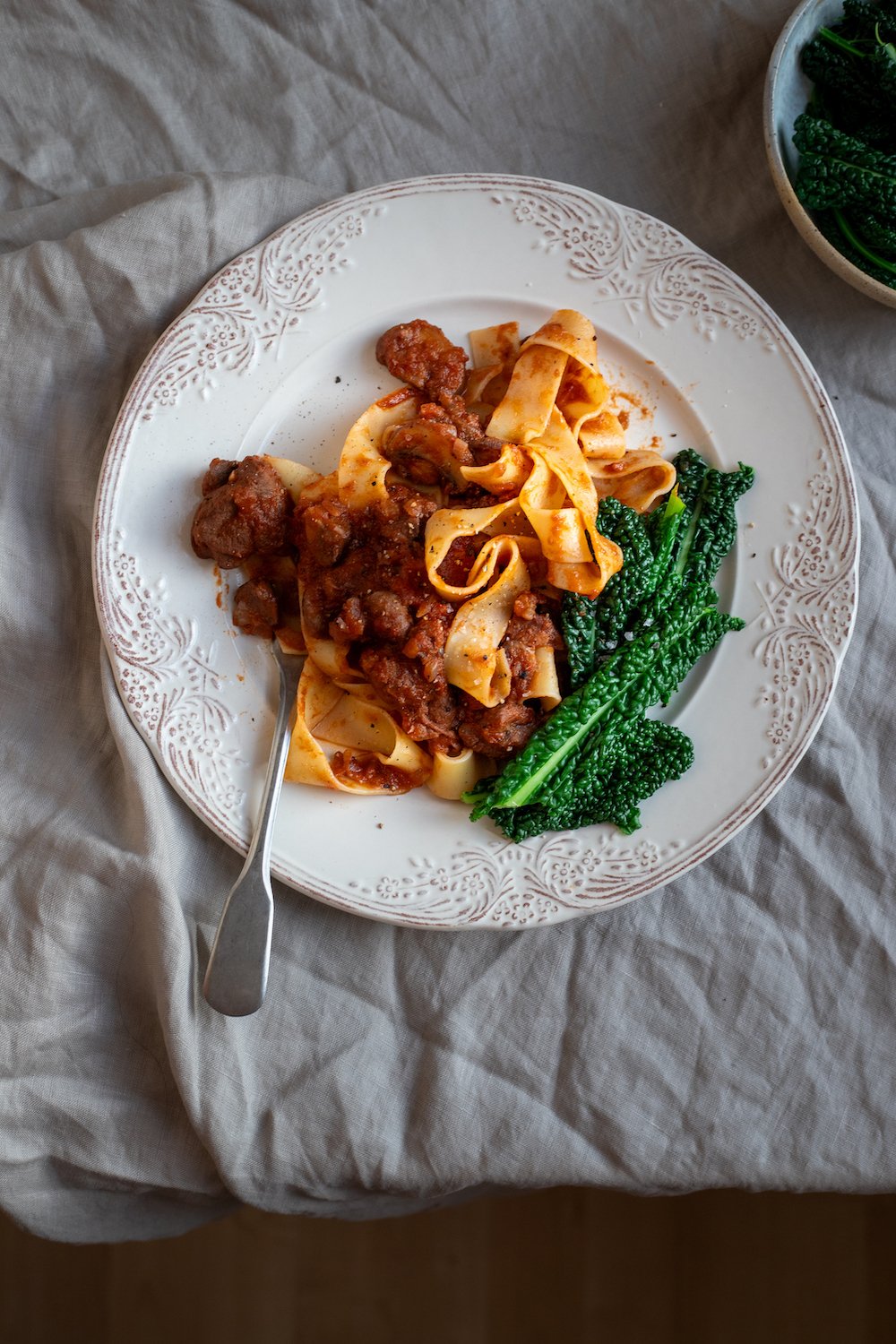Mild and creamy burrata with the sweet and sour notes of British rhubarb (or in season stone fruits) is such a delicious combination in a salad.
This recipe would make a great starter for 2 or a tasty lunch for 1.
Here are a few notes on the ingredients:
Burrata - meaning “buttered” is an Italian cheese whereby mozzarella is wrapped around a creamier version of mozzarella. The resulting cheese has a mozzarella-like exterior but a super creamy and soft centre. Its mild flavour makes a nice base for salads.
Look for it near the mozzarella in supermarkets.
For best results, season it well with sea salt and freshly ground black pepper and drizzle a generous amount of olive oil on it. Which brings me nicely onto the next ingredient:
Olive oil - The type of olive oil you use can make or break this recipe. Aim for a milder flavoured olive oil rather than the more bitter versions. Quality is worth paying attention to because a lot of olive oils are oil blends rather than pure olive.
The olive oil I’m using is the newly launched Positively Good For You Spanish olive oil.
As well as having an utterly beautiful flavour, it is also packed with heart-healthy antioxidants. Before you pose the legitimate question of “aren’t all olive oils packed with heart-healthy antioxidants?”, let me just answer this for you. Yes, polyphenols/ antioxidants are present in most olive oils but the longer the olive oil is stored, the more those antioxidants disappear. It is rare for a company to test for the polyphenols, guarantee their presence and provide a best-before date that is a true indication of freshness.
Also, the Positively Good For You olive oil is incredibly well priced (read: it’s cheap) considering the quality and care that goes into every bottle.
Rhubarb or stone fruits - At the time of making this recipe, British rhubarb was in peak season; however, burrata pairs well with any stone fruit. As the seasons change, juicy peaches or nectarines, gooseberries and plums would all work well.
To substitute the rhubarb in this recipe, simply use some grilled or roasted fruit and some raw fruit.
This will provide the best version of that sweet & sour flavour that makes this recipe so nice.
Ingredients (serves 2 as a starter or 1 as a lunch)
1 burrata cheese
2 sticks of rhubarb (or a handful of gooseberries, 1-2 peaches or 2 plums)
Great quality olive oil (I used this one)
5-6 mint leaves, finely sliced
5-6 basil leaves, roughly torn
A small handful of parsley, roughly chopped
3x radishes, thinly sliced
1/3 of a cucumber, thinly sliced
A large handful of watercress or a mix of bitter leaves such as watercress and rocket
A handful of blanched hazelnuts, toasted
Sea salt and freshly ground black pepper for seasoning
For the dressing:
Juice of 1/2 a lime
1 tablespoon of maple syrup
2 tablespoons of olive oil
Method:
1. Preheat your oven to 180 degrees C.
2. Roughly slice 1 stick of rhubarb into 1-2” chunks. Pop this on a roasting tray, drizzle with olive oil and roast for 10 minutes until soft but not falling apart. Allow it to cool slightly.
3. Very thinly slice 1/3 of a stick of rhubarb. This will add a lemon-like flavour and a different texture profile.
4. Put your burrata in the middle of a plate. Cut the shape of a cross in the top of it and pull it apart so it spreads out. Season really well with sea salt and black pepper and drizzle some olive oil over the top of it.
5. Sprinkle the herbs over the burrata.
6. Put the radish, cucumber, raw and roasted rhubarb on top of the burrata.
7. Make the dressing by mixing the maple syrup, olive oil and lime juice. Taste it to check the flavour. It should be sweet to balance the tartness of the rhubarb. If you are using a sweeter stone fruit then you can get away with less maple syrup.
8. Spoon the dressing over the salad.
9. Put a handful of bitter leaves on top. Season again and serve straight away.





